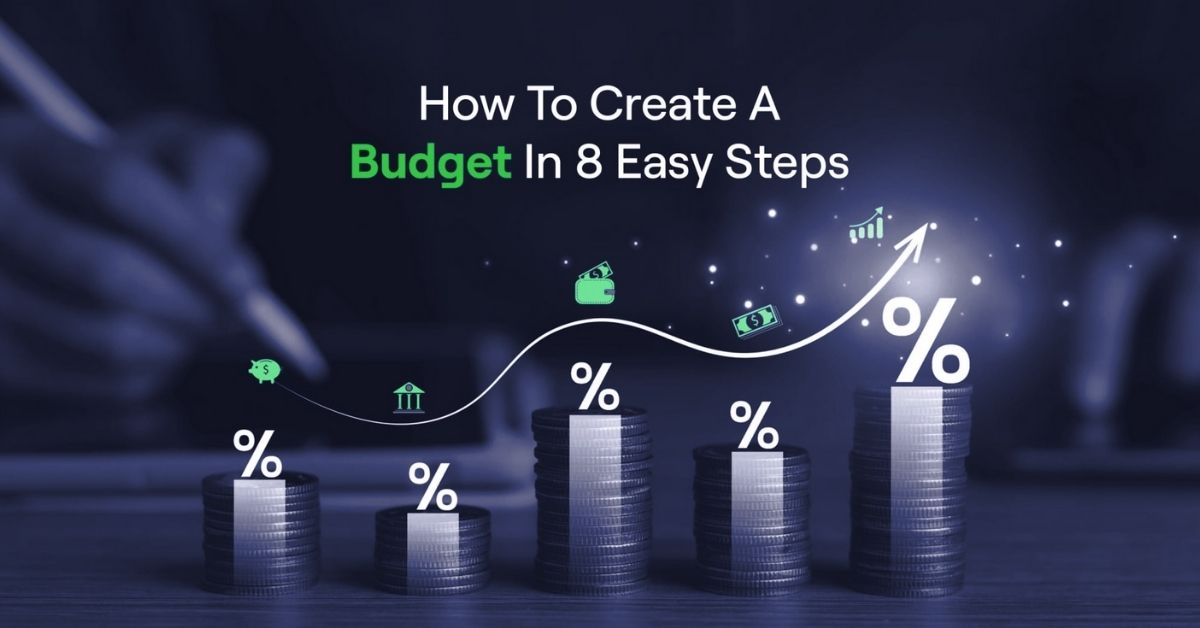Money is one of the biggest stressors in life. Whether you earn a modest salary or run a successful business, how you manage your income determines your financial security, quality of life, and long-term goals. For many, the word “budget” feels restrictive—as though it means cutting out everything fun. But in reality, a budget is about giving your money a clear purpose so you can spend confidently, save wisely, and plan for the future without guilt or fear.
This article will walk you through how to create a budget that actually works—not just for a month or two, but as a sustainable financial strategy. We’ll cover why budgets fail, what practical methods you can use, and step-by-step instructions to set up, monitor, and stick with a plan that matches your lifestyle.
Why Most Budgets Fail
Before we dive into creating one, it’s worth asking: why do so many people abandon their budgets after a few weeks?
- Unrealistic restrictions
Many people treat a budget like a crash diet—cutting out everything they enjoy. Eventually, deprivation leads to overspending. - Lack of flexibility
Life isn’t predictable. Unexpected car repairs, medical bills, or even an invitation to a wedding can blow up a rigid budget. - No clear goals
Without a compelling “why” behind budgeting, motivation disappears. It’s easier to give up when the goal is vague (“save money”) versus specific (“save $5,000 for a down payment in 12 months”). - Failure to track spending
If you don’t monitor where your money actually goes, your budget is just numbers on paper. - Too complicated
Spreadsheets with 40 categories or apps with endless rules make budgeting overwhelming. Simplicity wins.
Understanding these pitfalls will help you build a budget that’s realistic, flexible, purposeful, and simple enough to stick with.
Step 1: Define Your Financial Goals
A budget should always begin with your goals. Otherwise, it feels like an endless chore. Ask yourself:
- Do I want to pay off debt faster?
- Am I saving for a house, vacation, or emergency fund?
- Do I want to retire early or simply feel less stressed each month?
Write down your top three financial goals. Then, attach a timeline and a number to each. For example:
- Pay off $4,000 in credit card debt within 18 months.
- Save $10,000 for an emergency fund within 2 years.
- Max out a retirement account with $6,500 by year’s end.
When your budget ties directly to your goals, you’ll be far more motivated to stick with it.
Step 2: Track Your Income
Your budget starts with knowing how much money actually comes in. That includes:
- Primary income: salary, wages, business profits
- Secondary income: side hustles, freelance gigs
- Passive income: dividends, rental income, royalties
Be realistic—budget with your net income (what you take home after taxes and deductions), not your gross pay.
If your income fluctuates (e.g., freelancers, gig workers), calculate your average monthly income over the last 6–12 months, then budget conservatively using the lower end.
Step 3: Track Your Expenses
Here’s where most people are surprised. Many assume they know where their money goes, but when they actually track it, the results can be eye-opening.
Fixed Expenses
These stay the same each month:
- Rent or mortgage
- Insurance premiums
- Loan payments
- Subscriptions
Variable Expenses
These change from month to month:
- Groceries
- Gas or transportation
- Utilities
- Dining out
- Shopping
- Entertainment
Irregular Expenses
These pop up less often but must be planned for:
- Car repairs
- Medical bills
- Gifts and holidays
- Travel
How to track:
- Review your last 2–3 months of bank and credit card statements.
- Categorize every expense.
- Use apps like Mint, YNAB (You Need a Budget), or a simple spreadsheet.
This step provides clarity and reveals areas where you may be overspending.
Step 4: Choose a Budgeting Method
There’s no one-size-fits-all. Different budgeting methods work for different personalities and goals. Here are some of the most popular:
1. The 50/30/20 Rule
- 50% needs (housing, utilities, groceries, transportation)
- 30% wants (dining, entertainment, shopping)
- 20% savings and debt repayment
Best for: Beginners who want a simple, balanced approach.
2. Zero-Based Budgeting
Every dollar has a job. Income minus expenses = zero. You assign every dollar to a category (spending, saving, investing, or debt).
Best for: People who want control and accountability.
3. Envelope System
You allocate cash into envelopes for each spending category (groceries, dining, etc.). When the envelope is empty, you stop spending. Today, apps like Goodbudget provide a digital version.
Best for: Overspenders who need stricter discipline.
4. Pay Yourself First
You prioritize savings and investments first, then live on the rest. For example, automate retirement contributions and emergency fund transfers as soon as you’re paid.
Best for: Those focused on building wealth without tracking every dollar.
Choose one system—or even blend them—based on your personality and goals.
Step 5: Build Your Budget
Now it’s time to put it all together. Let’s create a sample budget for someone earning $4,000 per month after taxes:
- Needs (50%) – $2,000
- Rent: $1,200
- Utilities: $200
- Groceries: $400
- Transportation: $200
- Wants (30%) – $1,200
- Dining out: $400
- Entertainment: $300
- Shopping: $300
- Subscriptions: $200
- Savings/Debt (20%) – $800
- Emergency fund: $400
- Retirement account: $300
- Extra loan payment: $100
This is just a template—you’ll need to adjust categories and percentages to fit your reality.
Step 6: Automate Where Possible
One reason budgets fail is lack of follow-through. Automation solves this by removing willpower from the equation.
- Set up direct deposits into savings or investment accounts.
- Automate minimum debt payments plus extra contributions.
- Use autopay for fixed bills to avoid late fees.
Automation ensures your priorities are funded first, leaving less room for impulsive overspending.
Step 7: Monitor and Adjust Monthly
A budget isn’t “set it and forget it.” Life changes, so your budget must evolve too. Each month:
- Review your actual spending vs. your budget.
- Identify problem categories (e.g., dining out consistently exceeds the limit).
- Adjust allocations to match your lifestyle, or work on reducing problem areas.
Think of budgeting like navigation. You’ll need to steer and correct course along the way, but as long as you’re headed toward your goals, you’re succeeding.
Step 8: Build an Emergency Fund
An effective budget must account for surprises. Financial experts recommend saving 3–6 months of expenses in an emergency fund.
Start small—$500 to $1,000 as a starter cushion—then gradually build toward the larger goal. Store this money in a high-yield savings account so it’s accessible but still earning interest.
Step 9: Reduce Debt Strategically
If debt is eating into your budget, prioritize repayment. Two popular strategies:
- Debt Snowball: Pay off the smallest debt first for quick wins, then roll payments into the next debt.
- Debt Avalanche: Pay off the debt with the highest interest rate first to save money long-term.
Choose whichever method keeps you motivated. The key is consistency.
Step 10: Make Room for Fun
The best budget is one you can live with. Deprivation is unsustainable. Build in space for the things you love—coffee runs, travel, hobbies—so you don’t feel trapped.
Think of your “fun money” as guilt-free spending. As long as it’s in the budget, you can enjoy it without stress.
Tips for Sticking With Your Budget
- Use technology: Budgeting apps and bank alerts keep you on track.
- Stay accountable: Share goals with a partner, friend, or financial coach.
- Celebrate milestones: Paid off a credit card? Saved your first $1,000? Reward yourself (within reason).
- Review goals quarterly: As life changes—new job, kids, moving—update your budget.
Common Mistakes to Avoid
- Underestimating variable expenses (groceries and dining out often cost more than you think).
- Ignoring irregular expenses (plan ahead for birthdays, holidays, and annual insurance premiums).
- Relying on credit cards to “fill gaps.” If you need credit to survive monthly, it’s a red flag.
- Comparing your budget to others. Personal finance is personal.
Long-Term Success: Turn Budgeting Into a Habit
Budgeting shouldn’t feel like punishment—it’s a tool for freedom. When you control your money, you reduce stress, increase savings, and move closer to financial independence.
Key takeaways:
- Start with clear goals.
- Track your income and expenses honestly.
- Choose a budgeting system that fits your personality.
- Automate and adjust regularly.
- Build flexibility and fun into the plan.
With consistency, your budget becomes second nature—guiding your spending, building your savings, and helping you live the life you actually want.
Conclusion
Creating a budget that actually works isn’t about perfection. It’s about progress. Your first budget won’t be flawless, but every month you’ll learn more about your habits, refine your categories, and inch closer to financial freedom.
Remember: a budget is not a restriction—it’s permission. It allows you to spend confidently on what matters most while still securing your future. If you stick with it, your budget will become one of the most powerful tools in your financial toolbox.
Frequently Asked Questions (FAQs)
1. Why do most budgets fail?
Most budgets fail because they’re too restrictive, too complicated, or don’t reflect real-life spending. A budget must be flexible, realistic, and tied to specific goals in order to work long-term.
2. How do I start a budget if I’ve never done it before?
Start by tracking your expenses for 1–2 months. This gives you a baseline. Then, set financial goals, choose a simple method like the 50/30/20 rule, and adjust as you go.
3. Do I need a budgeting app, or is a spreadsheet enough?
Both can work. If you like automation and reminders, apps like Mint or YNAB are useful. If you prefer customization and control, a spreadsheet may be enough. The key is consistency in tracking.
4. How much should I save each month?
A good rule of thumb is to save at least 20% of your income. If that’s not possible, start smaller (5–10%) and gradually increase. The important part is building the habit.
5. What’s the difference between zero-based budgeting and the 50/30/20 rule?
Zero-based budgeting assigns every dollar a job, leaving no unallocated money. The 50/30/20 rule, by contrast, uses broad percentages for needs, wants, and savings. The former is more detailed, the latter more flexible.
6. How do I budget with an irregular income?
Use your lowest average monthly income as your baseline. Prioritize essential expenses and savings first, then add extras when you earn more. A separate “buffer” fund for lean months also helps.
7. Should I pay off debt before saving money?
Ideally, you should do both. Start with a small emergency fund ($500–$1,000), then focus aggressively on debt repayment. Once high-interest debt is under control, increase savings.
8. How can I make sure I stick to my budget?
Automate bills and savings, review your spending weekly, and build in money for fun. Tracking progress toward goals keeps motivation high.
9. Is cash-only budgeting better than using cards?
Cash-only (envelope system) can help overspenders stay disciplined, but cards provide convenience and rewards. If you use cards responsibly and track spending, both methods can work.
10. How often should I update my budget?
Review it monthly. Adjust for seasonal expenses, income changes, or life events like moving, a new job, or family growth. A budget is a living plan, not a one-time task.

